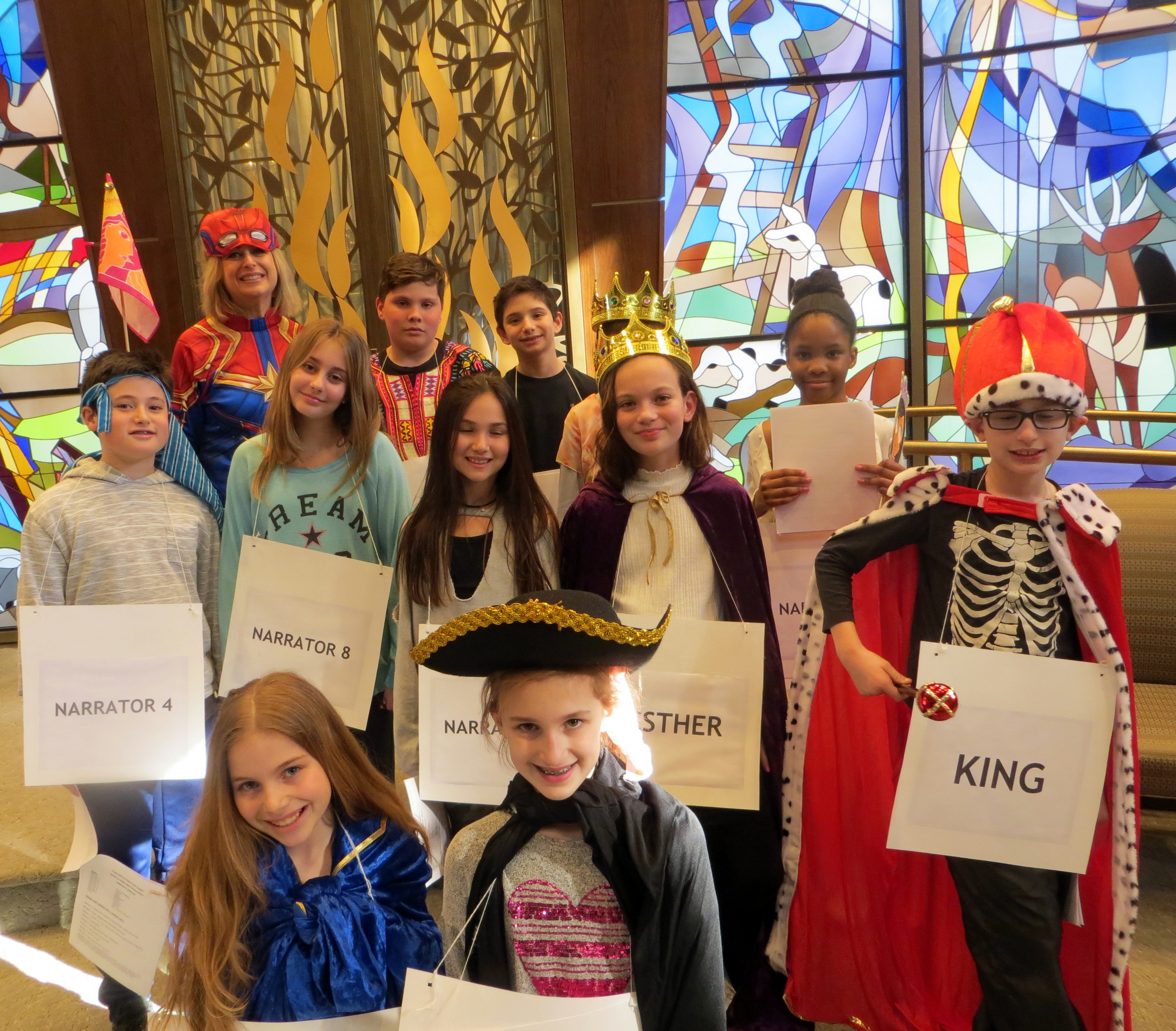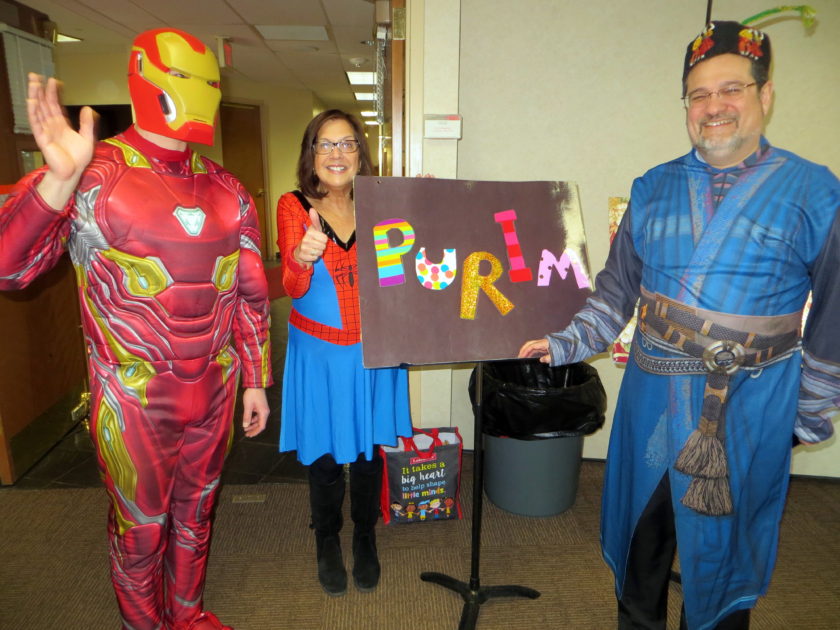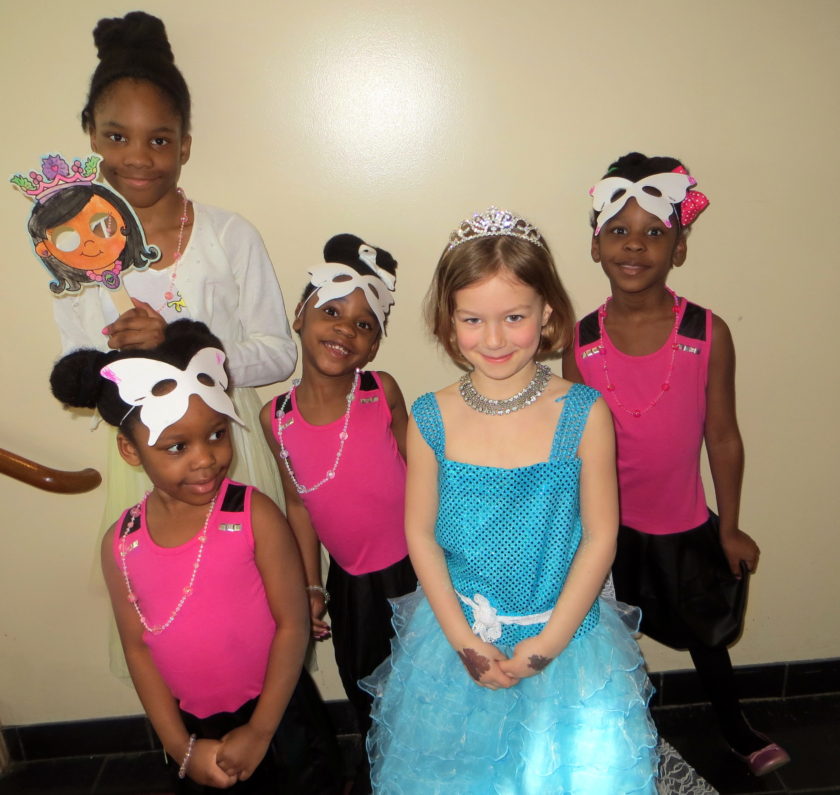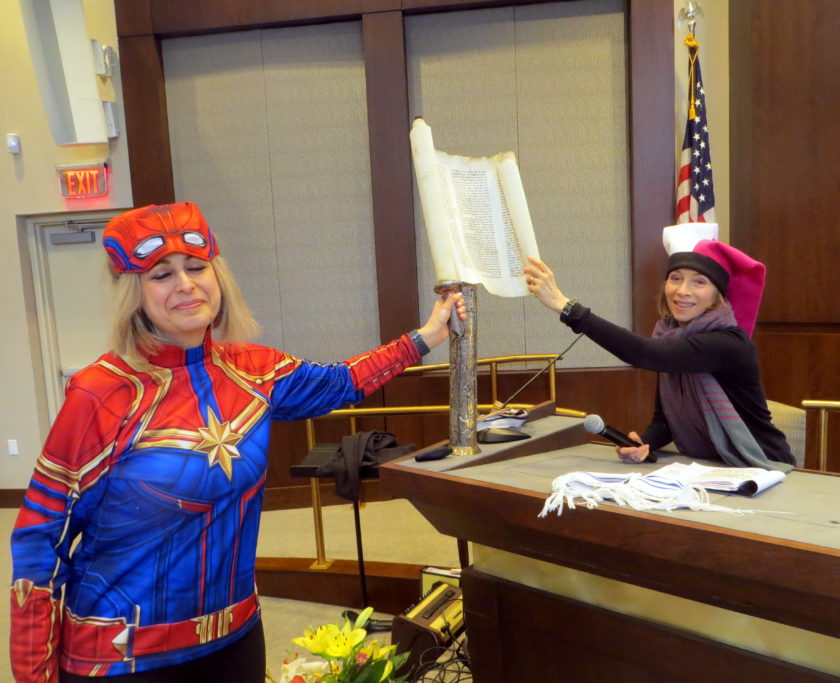
BY HILLARY VIDERS
SPECIAL TO NORTHERN VALLEY PRESS
TENAFLY, N.J.—Temple Sinai of Bergen County held its annual Purim celebration on March 20, and it was a fun filled extravaganza.
Dozens of children as well as parents and clergy and Board Members had a great time reenacting the Purim story and its customs at the temple in Tenafly.
One of the most festive and popular of the Jewish holidays, Purim celebrates the deliverance of the Jews from imminent doom at the hands of their enemies led by the evil tyrant, Haman, in ancient Persia, as told in the biblical Book of Esther and written in a scroll called the “Megillah.”
Beginning at 5 p.m., the celebration for the pre-school children in a downstairs classroom was led by Rabbi Jordan Millstein along with Risa Tannenbaum, Temple Sinai’s Early Childhood Director. Adding to the joy of the party, Sinai music teacher Maddy Krass, also known as “Maddy Rocks,” entertained on guitar.
Rabbi Millstein, dressed as Modecai, a central character in the story of Purim, exclaimed, “Purim is pure fun! The kids as well as the adults have a blast! Everyone gets to dress up, sing songs, and enjoy a delicious Purim dinner.”
Upstairs in the sanctuary, dozens more school-age children had their own Purim celebration. Rabbi Educator Beth Kramer-Mazer assisted Cantor Nitza Shamah as she read the Megillah. Kramer-Mazur also organized a group of students who put on a Purim play.

The story and traditions of Purim
Purim is so-called because the villain of the story, Haman, cast “purim” (which are lots, as in a lottery) to destroy the Jews, yet failed.
According to the Book of Esther, Haman, royal vizier to King Ahasuerus (presumed to be Artaxerxes I of Persia), planned to kill all the Jews in the empire, but his plans were foiled by Mordecai and his cousin and his adopted daughter Esther, who had risen to become Queen of Persia. The day of deliverance became a day of feasting and rejoicing.
A central part of the Purim celebration is the reading of the Purim story from the Megillah, usually done in a synagogue. Traditionally, the Megillah is not actually read—it is sung in Hebrew. During the “reading,” whenever Haman (the villain’s) name is mentioned, people boo, howl, hoot and shake noisemakers (groggers) to express their dislike of him.
A universal tradition of Purim is dressing up in costumes, symbolizing how Esther concealed her Jewish identity at the beginning of the Purim Story. Nowadays, however, people don’t just dress up as characters from the Purim story, such as Esther and Mordecai, but many don a wide range of costumes.
A fun-filled feast!
Purim, like many Jewish celebrations, involves food. Jews send each other mishloach manot, baskets filled with food and drink. According to Jewish law, each mishloach manot must contain at least two different kinds of food that is ready to eat.
Also on Purim, Jews enjoy a festive meal, called the Purim se’udah (meal), as part of the holiday celebration. People often serve special Purim cookies called hamantaschen, which means “Haman’s pockets,” during the dessert course.

Temple Sinai celebration was for young and old
The Purim celebration at Temple Sinai followed these traditions with gusto. Adults as well as children dressed in colorful costumes, including an army of Marvel superheroes, Disney characters, queens, princesses, pirates, and even a Harry Potter. In the hallway, there was a table with plates of hamantaschen.
In both the temple’s pre-school and school celebrations, as the Megillah was read, there were bursts of merry cacophony as the children shook their groggers and screamed with laughter every time the name Haman was mentioned.
Following the children’s parties, at 5:45 p.m., there was a festive dinner for the entire congregation. Over 200 people enjoyed brisket, stuffed cabbage and many other popular Jewish and Russian dishes.
The theme of Russia was also evident in “A Spiel on the Roof” a Purim skit with songs adapted from the Broadway hit “Fiddler on the Roof,” the story about a small Russian village uprooted during the reign of the Czar. A Spiel on the Roof,” was narrated and sung by Sinai congregants and clergy with takeoffs on some of the Broadway musical’s famous songs. As such, “If I Were a Rich Man” and “Tradition” became “If You Were the King’s Wife” and “It’s Purim.”

Purim in modern times
Although the Megillah scrolls date back to medieval times, the holiday of Purim still resonates in modern times. Temple Sinai of Bergen County’s rabbi educator, Mazur-Kramer, explained why Purim is so important.
“There is so much hatred in the world today. The joy of Purim helps overcome some of that hatred with joy,” Mazur-Kramer said.
On a larger scale, even non-Jews around the world identify with the Purim story, a narrative that has been repeated over and over in history—because it represents the ideals of perseverance and survival in the face of overwhelming destruction.
